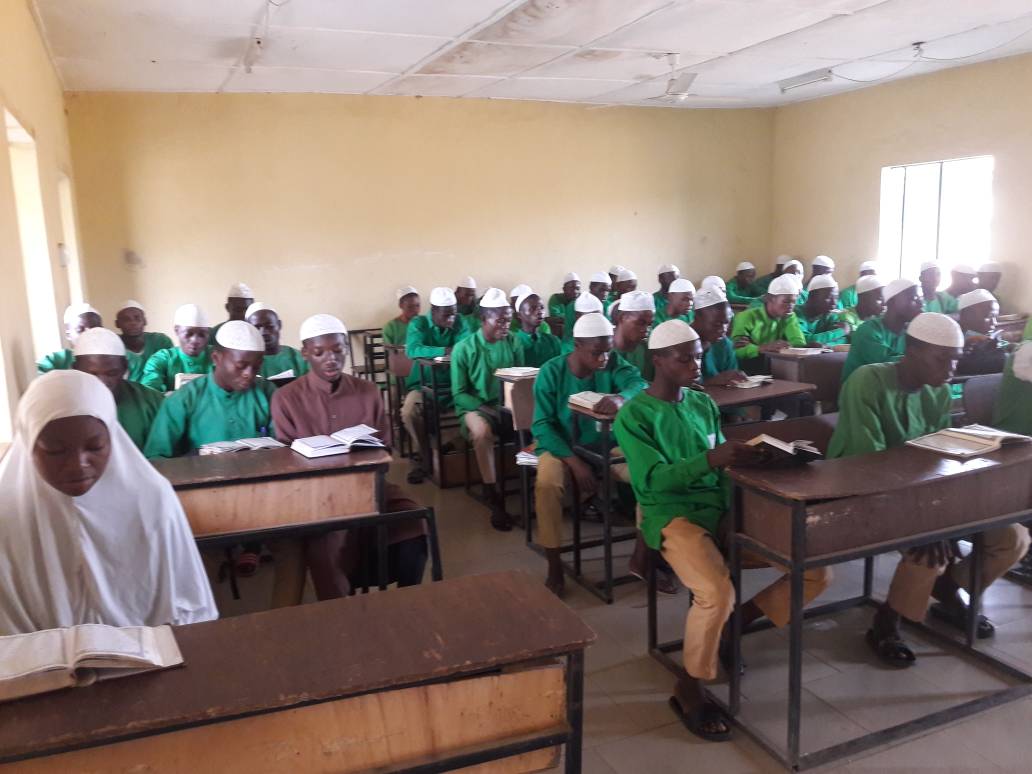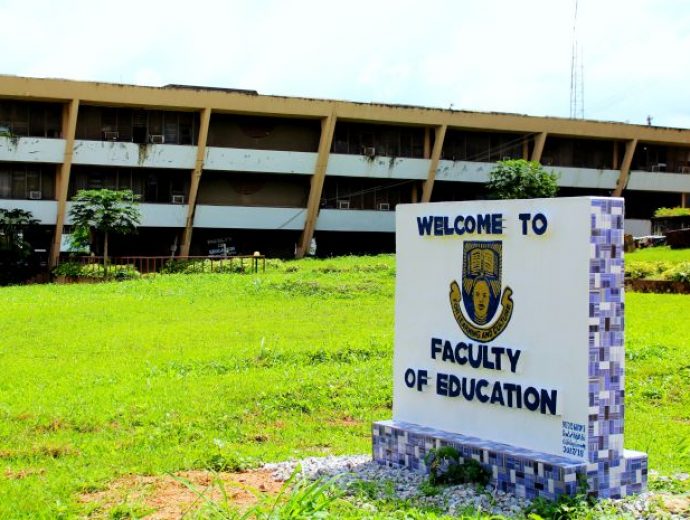In today’s rapidly evolving digital era, the advancement of education systems has become imperative to equip students with the necessary skills and knowledge for success in the 21st century.
Nigeria, like many other countries, is seeking ways to enhance its education system by integrating technology, promoting STEM education, adopting flexible learning models, and investing in teacher training. Drawing inspiration from successful practices in countries across Asia and the Nordic region, Nigeria can pave the way for a more innovative and effective educational landscape.
This piece explores key strategies from these regions to improve education in Nigeria and prepare students for the challenges and opportunities of the digital age.
The current debates surrounding Nigeria’s Minister for Education and his focus on the age of admission to higher education have sparked criticism and concern.
Many view his emphasis on increasing the admission or school certificate age as a missed opportunity to address more pressing issues facing the education sector.
His apparent neglect of critical issues such as out-of-school children, the almajiri phenomenon, and the shortage of teachers has led to accusations of being proverbially visionless and pathetically unimaginative.
A shift in priorities is necessary to tackle the fundamental challenges plaguing Nigeria’s education system.
The Minister for Education in Nigeria has faced criticism for focusing on raising the age of admission to higher education, instead of addressing more pressing issues within the education system.
This decision to prioritize age requirements for admission over other critical issues has been seen as short-sighted and lacking in vision.
One major issue that has been highlighted is the problem of out-of-school children in Nigeria. According to UNICEF, Nigeria has one of the highest rates of out-of-school children in the world, with an estimated 10.5 million children not receiving any form of formal education.
Instead of focusing on raising the age of admission, the Minister should be prioritizing strategies to get these children back into school and ensure they have access to quality education.
Another issue that the Minister should be addressing is the almajiri phenomenon, which refers to the system of Islamic education in Nigeria where children are sent to Islamic schools to study the Quran.
Many of these schools lack proper facilities, trained teachers, and a formal curriculum, leading to poor educational outcomes for the children enrolled in them. The Minister should be working to reform the almajiri system and ensure that these children have access to a quality education that will prepare them for the future.
Additionally, Nigeria is facing a shortage of qualified teachers, particularly in rural areas. Instead of focusing on raising the age of admission to higher education, the Minister should be implementing strategies to attract and retain qualified teachers, especially in underserved areas.
This would help to improve the quality of education in Nigeria and ensure that all children have access to quality teachers who can support their learning and development.
Centrally, the Minister for Education in Nigeria needs to shift his focus away from raising the age of admission to higher education and instead prioritize addressing key issues within the education system such as out-of-school children, the almajiri phenomenon, and the shortage of teachers.
By addressing these critical issues, the Minister can make a more meaningful impact on the education system in Nigeria and ensure that all children have access to quality education.
As the Minister for Education in Nigeria, there are numerous opportunities for improvement and advancement in the quality of education across the country.
To avoid being labelled as intellectually lazy in addressing the various challenges within the education system, the Minister must prioritize key areas such as out-of-school children, the almajiri phenomenon, and the shortage of teachers.

By implementing strategic and technical solutions, such as investing in teacher training programs, increasing access to educational resources, and addressing infrastructure deficits, the Minister can work towards ensuring a more equitable and inclusive education system.
Criticism is essential in driving accountability and sparking innovation, pushing the Minister to rethink his approach and adopt a more proactive and comprehensive strategy to enhance education in Nigeria, from basic to higher levels.
The Minister for Education in Nigeria has a range of opportunities to improve the quality of education in the country. Some of the key areas where the Minister can focus on include:
- Addressing the issue of out-of-school children: One of the most pressing issues in Nigeria’s education system is the high number of children who are not receiving any formal education. The Minister can work on strategies to get these children back into school, such as implementing programs to provide scholarships, improving infrastructure in schools, and addressing barriers to education such as poverty and cultural norms.
- Reforming the Almajiri system: The Minister should work on reforming the Almajiri system to ensure that children in Islamic schools have access to quality education. This could involve implementing a formal curriculum, training teachers, and providing resources to improve educational outcomes for these children.
- Addressing the shortage of teachers: Nigeria is facing a shortage of qualified teachers, particularly in rural areas. The Minister can work on strategies to attract and retain qualified teachers, such as offering incentives, training programs, and professional development opportunities.
- Improving infrastructure in schools: Many schools in Nigeria lack basic facilities such as classrooms, textbooks, and electricity. The Minister can prioritize improving infrastructure in schools to create a conducive learning environment for students.
In terms of tools available to the Minister to improve the quality of education in Nigeria, some of the key tools include:
– Policy reforms: The Minister can introduce policy reforms to address key issues in the education system, such as curriculum development, teacher training, and school infrastructure.
– Collaboration with stakeholders: The Minister can work with other government agencies, NGOs, and community organizations to implement programs and initiatives to improve the quality of education in Nigeria.
– Monitoring and evaluation: The Minister can implement systems to monitor and evaluate the impact of education programs to ensure that they are effective in improving the quality of education in Nigeria.
To avoid becoming intellectually lazy in handling education matters in Nigeria, the Minister should prioritize evidence-based decision-making, engage in continuous learning and training, and seek input from experts and stakeholders in the field of education.
By taking a strategic approach and focusing on key issues in the education system, the Minister can make a meaningful impact on improving the quality of education in Nigeria.
For the Minister of Education in Nigeria, it is imperative to present a clear and comprehensive educational blueprint to the public that outlines a strategic vision for the sustainable development of the country’s education system.

This blueprint should address critical issues such as curriculum reform, teacher quality and training, infrastructure development, and access to education for marginalized populations.
By transparently sharing this blueprint with Nigerians, the Minister can demonstrate accountability, foster trust, and engage stakeholders in the collective effort to improve the quality of education across the nation.
It is through such proactive and transparent measures that the Minister can pave the way for lasting and impactful change in Nigeria’s education sector, driving progress towards a more equitable and inclusive educational landscape.
Yes, it is essential for the Minister of Education in Nigeria to make public a valid educational blueprint for the sustainable development of the country’s education system.
A well-defined educational blueprint serves as a roadmap that outlines the priorities, goals, strategies, and action plans for improving the quality of education and driving sustainable development in the country.
By making the educational blueprint public, the Minister can ensure transparency, accountability, and stakeholder engagement in the education reform process.
This blueprint should address key issues such as access to education, quality of education, teacher training, curriculum development, infrastructure improvement, and educational equity.
Furthermore, a valid educational blueprint should be evidence-based, data-driven, and aligned with the country’s national development goals.
It should reflect best practices in education reform, take into account the diverse needs of students, and consider the input of education experts, stakeholders, and the general public.
In addition, the educational blueprint should include mechanisms for monitoring and evaluating progress towards the stated goals, as well as mechanisms for adjusting strategies based on feedback and changing circumstances.
By presenting a clear and comprehensive educational blueprint, the Minister can demonstrate leadership, accountability, and commitment to improving the education system in Nigeria for the benefit of all Nigerians.
In navigating the challenges and opportunities of the digital era, Nigeria’s education system can look to examples from nations in the Global North, particularly the Asian Tiger economies, for inspiration.
These countries have leveraged technology and innovation to enhance their education systems, equipping students with the skills needed to thrive in a rapidly changing world.
By investing in digital infrastructure, promoting STEM education, and embracing online learning platforms, Nigeria can ensure that its students are prepared for the demands of the 21st century economy.
Additionally, partnerships with leading tech companies and educational institutions can help Nigeria harness the power of digital tools to expand access to quality education and drive socio-economic development.
By adopting a forward-thinking approach and drawing on successful strategies from around the globe, Nigeria can position itself as a leader in educational innovation and excellence.
In order to advance Nigeria’s education system in the digital era, the following are some ways forward:
- Integration of technology: Embrace technology in the classroom to enhance teaching and learning. Providing access to digital resources, online learning platforms, and educational apps can help improve student engagement, understanding, and retention.
Example from Asia: Singapore is known for its high-performing education system that integrates technology effectively. The country has invested in infrastructure, teacher training, and digital resources to support technology-enabled learning in schools.
- STEM education: Emphasize Science, Technology, Engineering, and Mathematics (STEM) education to prepare students for future careers in the digital economy. Introducing coding, robotics, and other STEM subjects from an early age can help develop critical thinking, problem-solving, and innovation skills.
Example from Asia: South Korea has a strong focus on STEM education and is known for producing highly skilled graduates in fields such as engineering, technology, and science. The country has invested in STEM curriculum, teacher training, and industry partnerships to support STEM education.
- Flexible learning models: Adopt flexible learning models that cater to diverse learning styles and needs. Blended learning, personalized learning, and competency-based education can help students learn at their own pace and level.
Example from Nordic Nations: Finland is recognized for its student-centered approach to education, which emphasizes personalized learning, collaboration, and student autonomy. The country has flexible learning models that allow students to explore their interests and strengths.
- Teacher training and professional development: Invest in teacher training and professional development to equip educators with the skills, knowledge, and tools to effectively integrate technology into their teaching practices and promote digital literacy among students.
Example from Asia: Japan has a comprehensive teacher training system that focuses on continuous professional development and innovation in teaching practices. The country emphasizes the importance of updating skills, incorporating new technologies, and adapting to changing educational needs.
By implementing these strategies and learning from the experiences of nations in the Global North and Asia, Nigeria can enhance its education system in the digital era and better prepare students for the challenges and opportunities of the 21st century.
In conclusion, as Nigeria looks towards the future of education in the digital era, it is essential to consider the lessons and successes of nations such as Singapore, South Korea, Finland, and Japan.
By integrating technology effectively, emphasizing STEM education, implementing flexible learning models, and prioritizing teacher training, Nigeria can revitalize its education system and ensure that students are equipped with the skills needed to thrive in an increasingly digital world.
By learning from the experiences and best practices of these countries, Nigeria can chart a course towards a more innovative, student-centred, and successful education system that prepares students for the opportunities and challenges of the 21st century.
Read Author’s Profile Here.






